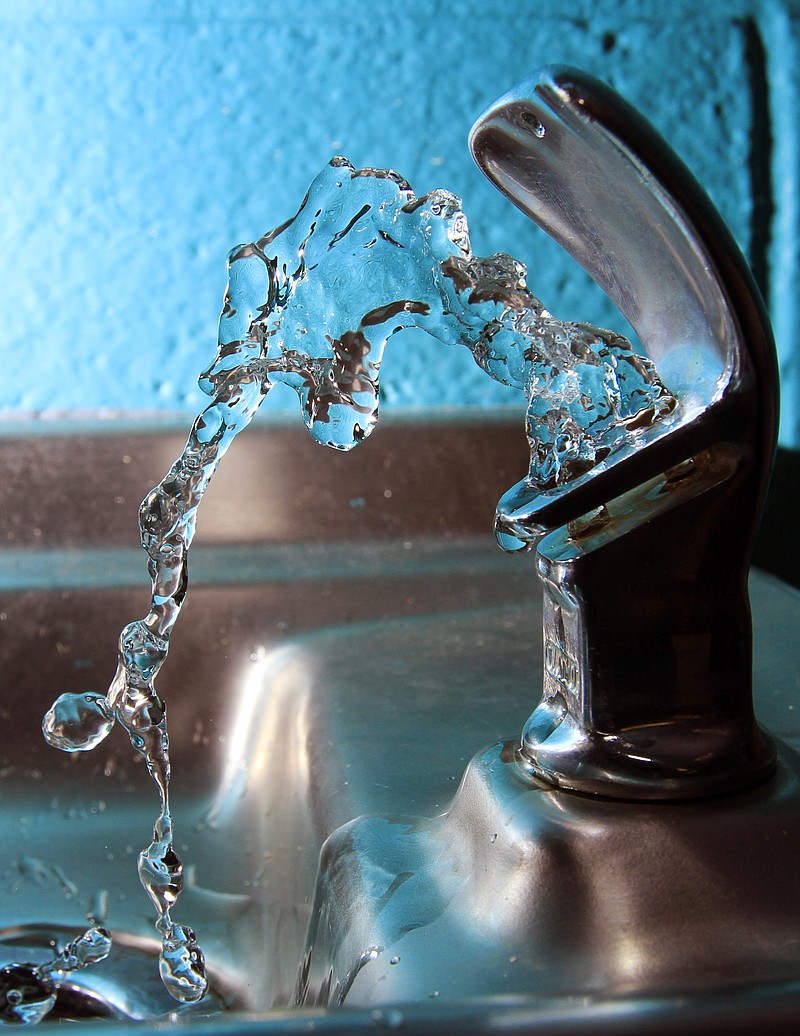NASHVILLE -- This is one national ranking Tennessee officials are not likely to boast about any time soon.
As of July, Tennessee had the highest percentage nationally of unspent money from a federal program used to improve the nation's local drinking water systems and ensure the water flowing through your tap is reliable and safe.
The national figures, compiled by The Associated Press, show that of the estimated $194.2 million in cumulative funds Tennessee received since 2011 under the federal Environmental Protection Agency's Drinking Water State Revolving Fund, 15.67 percent remains unspent.
That comes to $30.44 million for the program that provides low-to-no-interest loans to dozens of local water systems across Tennessee. While other states like California had higher actual unspent dollar amounts, Tennessee had the highest percentage.
The AP review shows project delays, poor management in some states and other factors have contributed to nearly $1.1 billion in unspent money when it comes to states' collective accounts nationally. The money is used to help communities fund public water projects ranging from new drinking water plants to replacing or upgrading old delivery structures like pipes.
By comparison, nearby Alabama's unspent funds - $5.7 million - represent just 2.8 percent of the estimated cumulative $200 million in federal funds the state received from 2011 to 2015. Georgia's unspent percentage was 7 percent, or $24.43 million out of $348.7 million.
Last year, EPA's inspector general issued a report saying its examination showed that in some states the unused funds resulted in "missed opportunities." It also noted that "when loans are not issued, intended drinking water improvements may not be implemented and states lose opportunities to infuse funds into their economy and create jobs."
For the past several years, EPA officials have been nudging states to put the money to use more quickly.
Tennessee officials insist the situation here isn't as bad as it appears. The "unobligated" fund balance actually was obligated but was "artificially inflated" due to a previously accepted accounting method used by Tennessee, said Eric Ward, a spokesman with the state Department of Environment and Conservation.
"For example," Ward said, "if you consider a loan to a drinking water utility for $2 million made in 2011, all contractor charges for that work would be paid from the 2011 EPA Drinking Water capitalization grant, even if the construction work required four years to complete."
He said that while the $2 million for the project was obligated, "it would not show up as an obligation to EPA until the utility actually incurred costs and charges were ultimately made against the 2011 EPA Drinking Water capitalization grant."
Still, Ward acknowledged, the practice "did slow the pace of spending federal funds allocated because each loan was tied to a specific, annual EPA Drinking Water capitalization grant."
As a result of "several discussions" with EPA on its spending pace, Tennessee last year implemented a "First In First Out" spending approach that EPA had encouraged. Ward said that allows Tennessee to draw from the oldest EPA Drinking Water capitalization grant first, "no matter which year the Drinking Water Loan was made."
"Since implementing the change, Ward said, "TDEC has experienced significant improvements in the pace of spending, closing out older capitalization grants more quickly, and in reducing unliquidated obligations."
In fact Tennessee's percentage of unspent money dipped from 17.53 percent last year to this year's 15.67 percent. It will continue dropping, Ward said.
Still, it's not clear whether all the money will be out the door by August 2016, which EPA would like to see happen nationally.
"I want to clarify that EPA's goal is a goal, not a requirement," Ward said when asked about meeting the target. "It is difficult to speculate at this time where we stand on meeting that goal, because the spending is entirely driven by requests made by the loan recipient and how much they request to borrow."
This year's priority ranking list for Tennessee's Drinking Water State Revolving Fund shows 31 projects totaling $65.86 million.
Rob Moore, a senior policy analyst at the Natural Resources Defense Council, a national environmental group, said "there are many fingers of blame that you can point at on why the funds don't move more quickly or smoothly to municipalities. This is a big issue. The nation faces tens of billions of dollars of water needs."
In some case, increased requirements set by Congress make things more difficult, Moore said. State application forms can be complicated and difficult for districts, especially smaller ones, to fully understand. And at a time of historically low interest rates, larger cities in good financial shape can sometimes find better deals with less onerous requirements on the open market, he said.
Meanwhile, Moore cautioned, Congress has been cutting funding to the drinking water grant program. And further reductions could come as federal lawmakers fashion spending bills for the upcoming fiscal year.
There is one non-EPA-related change in Tennessee's program that may benefit Chattanooga consumers.
For years, the state did not allow privately owned utilities to qualify for the loans. But this year, state lawmakers passed a law enabling companies like investor-owned Tennessee American Water Co., which provides water for Chattanooga, Lookout Mountain, East Ridge, Red Bank and parts of Hamilton County, to access Tennessee's Drinking Water State Revolving Fund.
"As a result of this law being enacted, Tennessee American Water would be able to apply for loans through the fund at lower interest rates, which would result in a cost-savings that would be beneficial to customers," company spokeswoman Daphne Kirksey said.
Contact Andy Sher at asher@timesfreepress.com or 615-255-0550.
